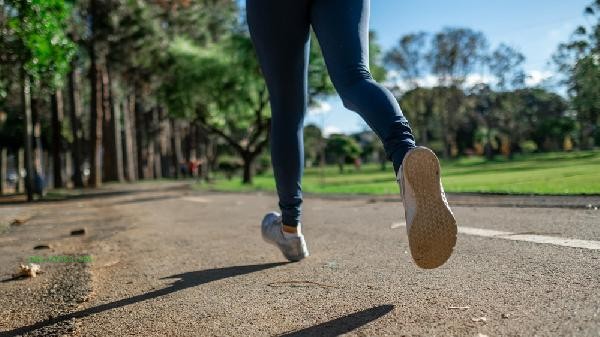After running, chest discomfort can be relieved by adjusting breathing rhythm, reducing exercise intensity, replenishing fluids, taking appropriate rest, and seeking medical examination. Chest discomfort during running is usually caused by overexertion, respiratory disorders, myocardial ischemia, chest muscle strain, or underlying cardiovascular diseases.

1. Adjust respiration
Use abdominal breathing method, with the abdomen bulging during inhalation and slowly contracting during exhalation. Avoid shallow and rapid chest breathing. It is recommended to inhale every two steps and exhale every two steps. If the environment is cold, a scarf can be used to cover the mouth and nose to prevent direct irritation of the respiratory tract by cold air. Before running, you can practice deep breathing for 5 minutes to help establish a regular breathing pattern.
2. Reduce intensity
Immediately reduce the running speed to brisk walking level, and slope trainers need to level the treadmill. The heart rate should be controlled below 60% of the maximum heart rate and can be monitored in real-time by wearing a sports wristband. For novice runners, it is recommended to use a running walking alternation method, with a single continuous running time not exceeding 10 minutes. The increase in exercise should follow the principle of not exceeding 10% per week to avoid sudden increases in running volume.
3. Supplement water
Drink 200-300 milliliters of room temperature electrolyte beverage in small sips to avoid coughing. 500 milliliters of water should be replenished 2 hours before exercise, and 150 milliliters of water should be replenished every 20 minutes during exercise. Dehydration can lead to an increase in blood viscosity, which may induce myocardial hypoxia. Avoid drinking ice water or caffeinated beverages to prevent worsening of vascular spasms and discomfort.

4. Adequate Rest
Immediately stop exercising and adopt a semi recumbent position to rest, raising both legs to promote blood flow back. Hot compress can be applied to the sternum area, with a temperature controlled at around 40 ℃ for 15 minutes each time. Avoid repeated vigorous exercise within 48 hours, and switch to low impact exercises such as swimming or yoga during the recovery period. Maintain a left lateral position during sleep to reduce pressure on the heart.
5. Medical examination
If accompanied by cold sweat, radiating pain in the left shoulder, or if it persists for 15 minutes without relief, be alert to angina attacks. Coronary atherosclerosis, myocarditis and other diseases may show symptoms for the first time during exercise. It is recommended to conduct exercise flat tests, coronary CTA and other examinations. Asthma patients should use salbutamol aerosol according to the doctor's advice before exercise, and diabetes patients need to prevent painless myocardial ischemia.

Daily warm-up and dynamic stretching should be done before exercise, with a focus on the shoulders, neck, and thoracic spine. Choose sports underwear with good breathability to avoid tight clothing that limits chest expansion. Regular assessment of cardiovascular and pulmonary function is recommended, and it is recommended for individuals aged 40 and above to undergo an annual cardiac ultrasound. supplementing with slow-release carbohydrates such as bananas and whole wheat bread after exercise can help restore myocardial energy. When symptoms such as recurrent chest pain or difficulty breathing occur, it is necessary to seek medical attention promptly at the cardiovascular department.






Comments (0)
Leave a Comment
No comments yet
Be the first to share your thoughts!